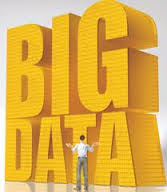 Big Data in eLearning and education—to some Big Data may seem like a foreign topic related only to high-tech industries. But, as education technologies and learning management systems begin to advance, so too is our data on user activities and experiences within learning technologies. As Big Data becomes more complex in education and eLearning; tools are being created to analyze information aggregated from learning management systems and learning technologies. Analysis of said ‘Big Learning Data’ is providing us with information to improve in-class, eLearning and teaching experiences. Let’s take a closer look.
Big Data in eLearning and education—to some Big Data may seem like a foreign topic related only to high-tech industries. But, as education technologies and learning management systems begin to advance, so too is our data on user activities and experiences within learning technologies. As Big Data becomes more complex in education and eLearning; tools are being created to analyze information aggregated from learning management systems and learning technologies. Analysis of said ‘Big Learning Data’ is providing us with information to improve in-class, eLearning and teaching experiences. Let’s take a closer look.
What does Big Data in Education and eLearning look like?
Essentially, big data in education and eLearning is created when learners engage in learning activities either through a learning management system or through in-class learning technologies. For example, say you were to take an eLearning course and complete it from start to finish. The learning management system you took the course within would have collected individual learning data from your experience in the following ways:
- Specific modules, questions or assignments where you excelled and where you had difficulty
- Length of time it took you to read certain articles and answer related questions
- Videos you watched and areas where you paused, replayed or stopped watching
On an individual level, this is great for instructors to know as they can tailor eLearning experiences to meet your specific needs. Additionally, teachers have the ability to know where you are having trouble in order to direct further learning materials your way, or to set up some one-on-one teaching time.
‘Big Learning Data’ is then the aggregation and analysis of all of the aforementioned individual data to draw larger conclusions on how to change over all course or module design. For example, as aforementioned, teachers can gain insight into modules where the majority of learners struggled in order to modify the way it is taught or delivered. Modularizing this even further, teachers can see which test or quiz questions were most frequently answered incorrectly to either modify the wording, or provide further instruction. Teachers can also gain insight into learning modules or videos that are most socially shared to understand what teaching material is popular. As I am sure you can see and predict, education is going to increasingly become more data-driven!
How will Big Data change the Learning Experience?
The aforementioned scenarios only cover the tip of the iceberg—there are many more ways for teachers to analyze individual and aggregate data to improve the learning experience. This is precisely how Big Data will change the learning experience—teachers and educators will be better informed as to what is working and what is not allowing them to make course-wide and individual learning path changes to ensure that the learning experience is always improving.
With the explosion of Big Data from talent and performance management systems, HR executives are beginning to see the benefit in utilizing this information for predictive analytics and ultimately, better decision making. This whitepaper explains the types of questions HR managers can answer with Big Data and predictive analytics.





